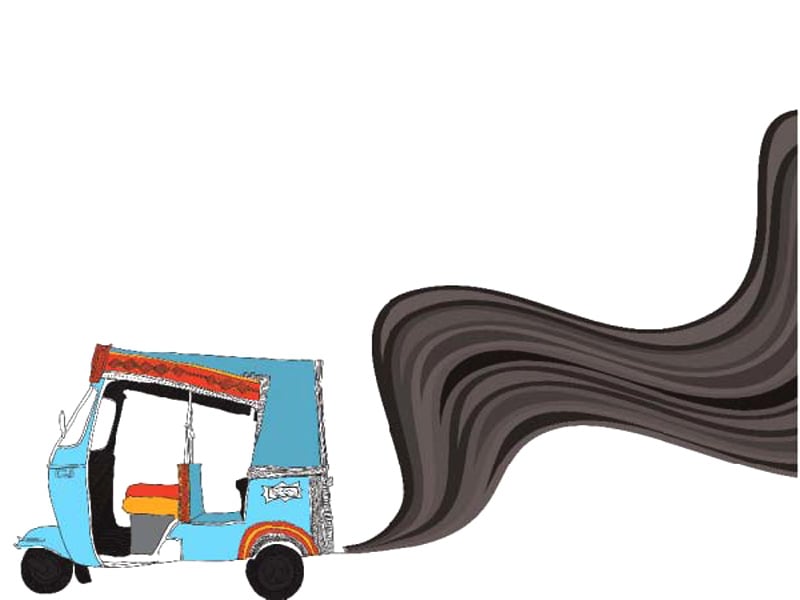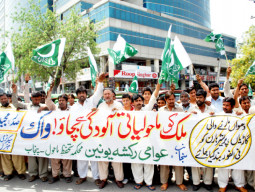
Rawalpindi transport and environment authorities on Wednesday inspected and declared fit for the environment five rickshaws which had converted to four-stroke engines from two-stroke after government intervention.
The Rawalpindi District Regional Transport Authority (DRTA) had launched a campaign in February to convert the city’s two-stroke rickshaws to four-stroke engines to curb air pollution. But the small number of converted and approved rickshaws is indicative of the ongoing campaign’s struggling nature. The four-stroke engine is better for the environment because it emits less carbon monoxide and hydrocarbons. But it is expensive to buy and maintain, so rickshaw owners are reluctant to convert their three-wheelers.
The DRTA has so far impounded around 300 rickshaws but only around 15 to 20 rickshaws have been converted in two and a half months. In February, the DRTA said that 50 rickshaws were converted but it has since backed down on its claims and revised the count. “The conversion rate has been slow,” DRTA Secretary Awais Tarrar said. However, he added, the rate will pick up pace now because the one-month period given to some of the rickshaw owners is almost over. The owners will risk arrests if they do not convert by the time the one-month period expires.

On Wednesday, a team comprising a motor vehicle examiner, a Rawalpindi District Environment Office (DEO) field officer and DRTA officials inspected the five rickshaws at the DRTA compound in Rawalpindi. The five rickshaws were tested for the density of smoke and noise intensity.”All the five rickshaws scored below the 40 per cent limit for smoke density and the 85 decibels noise limit set by the National Environmental Quality Standards,” DEO Field Inspector Maqbool Hussain, said.
The Punjab government has repeatedly tried to ban two-stroke rickshaws from five major cities including Rawalpindi since 2005, following a Lahore High Court order to eliminate them by 2007. But even five years after the court’s first deadline expired, two-stroke rickshaws have not completely gone away.
Currently, Rawalpindi has around 3,100 registered four-stroke rickshaws.
When the DRTA stopped issuing route permits in 2007, there were around 4,000 two-stroke rickshaws in the city. The DRTA suggests the number has gone down since then because some rickshaws moved to smaller cities and others converted to four-stroke engines. But rickshaw owners put the number of two-stroke petrol and CNG rickshaws in the city around 5,000 to 10,000 altogether.
Two-stroke rickshaw driver Abdullah Jan, sitting inside his rickshaw near Shamsabad, said he had not heard about the 4-stroke engine conversion campaign, adding that compliance would be too expensive for him anyway. “I spent Rs1,200 to improve the body of my rickshaw and install a new silencer to reduce noise,” he said. “But with a daily income of Rs500, I would not be able to afford spending Rs30,000 to convert to a 4-stroke engine.”
Published in The Express Tribune, April 18th, 2013.




































1713853507-0/MalalaHilary-(2)1713853507-0-270x192.webp)







COMMENTS
Comments are moderated and generally will be posted if they are on-topic and not abusive.
For more information, please see our Comments FAQ